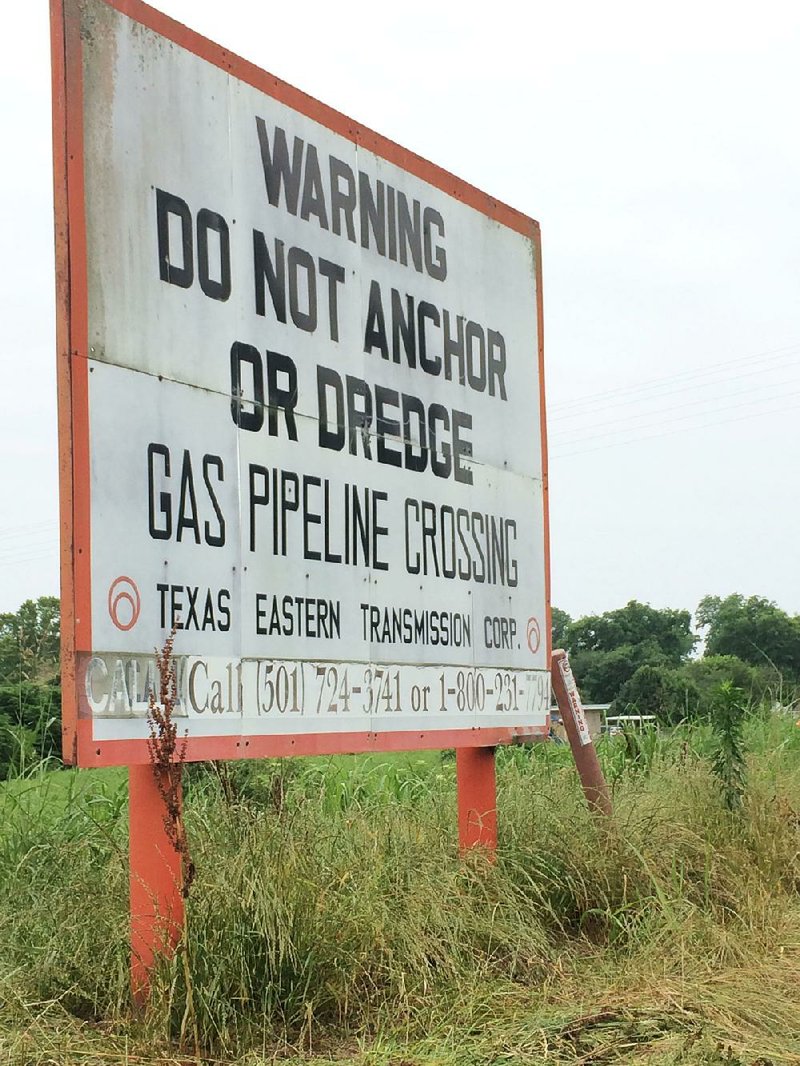Spectra Energy began covering its main transmission line under the Arkansas River with a layer of rock this week in response to signs that the river's current played a part in the violent rupture of its parallel, backup pipeline in May.
Spectra Energy still does not know what caused its natural gas pipeline near downtown Little Rock to fail, company spokesman Creighton Welch said Thursday in an email. An investigation into the cause of the rupture is continuing, he said.
"As a precautionary measure, this week we began covering the main line with rock," he said. "Indications are that the swift river current played a role at some point during the event, and blanketing the line with the rock will provide a layer of strong covering to ensure protection of the main line."
The pipeline is part of Spectra Energy's Texas Eastern Transmission system, which crosses the river between Little Rock and North Little Rock about a mile downstream from the Interstate 30 bridge.
The system's 24-inch backup pipeline released 3.9 million cubic feet of natural gas into the Arkansas River when it ruptured the morning of May 31, sending up two geysers. Large pieces of concrete, possibly from the pipeline, damaged a boat docked nearby at Jeffrey Sand Co.
The backup line and main transmission line are about 10 feet apart. The backup pipeline was pressurized but not in operation when it ruptured.
The main 24-inch transmission line runs from Texas to New Jersey and supplies CenterPoint Energy. It was operating normally after the other pipeline ruptured, but Spectra Energy shut it down briefly as a precaution.
Welch said Spectra Energy shut down the transmission line again before it began covering it with rock on Monday. He said the line will be restarted when work to cover it ends in mid-September.
Alicia Dixon, a spokesman for CenterPoint Energy, said natural gas supply is not being affected by the work.
Spectra Energy is covering the transmission line with 5 to 6 feet of stone.
The concrete-coated pipelines were placed in the river in 1952. They were installed in a trench -- as other pipelines were at the time -- about 6 to 10 feet beneath the riverbed. The pipe was then covered in river mud and sand, with the company maintaining and inspecting the coverage.
Spectra Energy said that it last checked for exposed sections of the backup pipeline in 2011 and no problems were found. At the time, the pipeline was about 4 feet below the riverbed.
Pipeline river crossings now involve horizontal drilling, and pipes are angled beneath the river and pushed across. This method places pipelines at least 50 to 60 feet below the riverbed, industry experts have said.
The river was above flood stage at the time of the rupture, and a 400-foot section of the backup line broke away and moved about 100 feet downstream.
Spectra Energy removed the last section of the displaced pipe on August 19 and has sent sections to a firm that specializes in finding anomalies in pipelines, Welch said.
The company also removed about 160 feet of pipe from the north and south ends of the backup pipeline on August 28.
"We ceased recovery operations for a period of time until the river had subsided enough to allow us to safely recover pipe," Welch said. "A time line for determining the root cause is unknown."
Business on 09/04/2015
